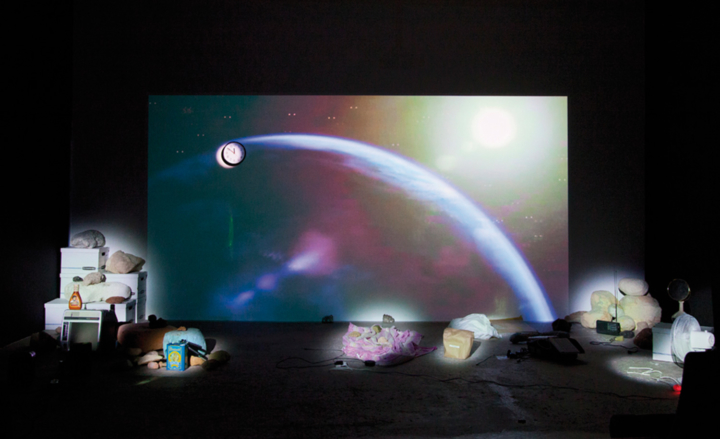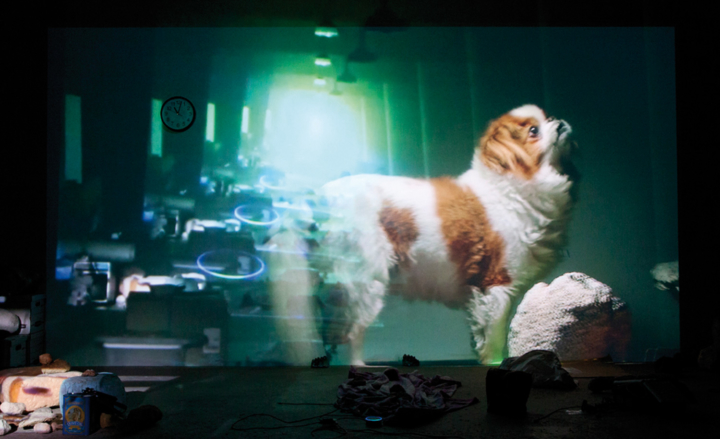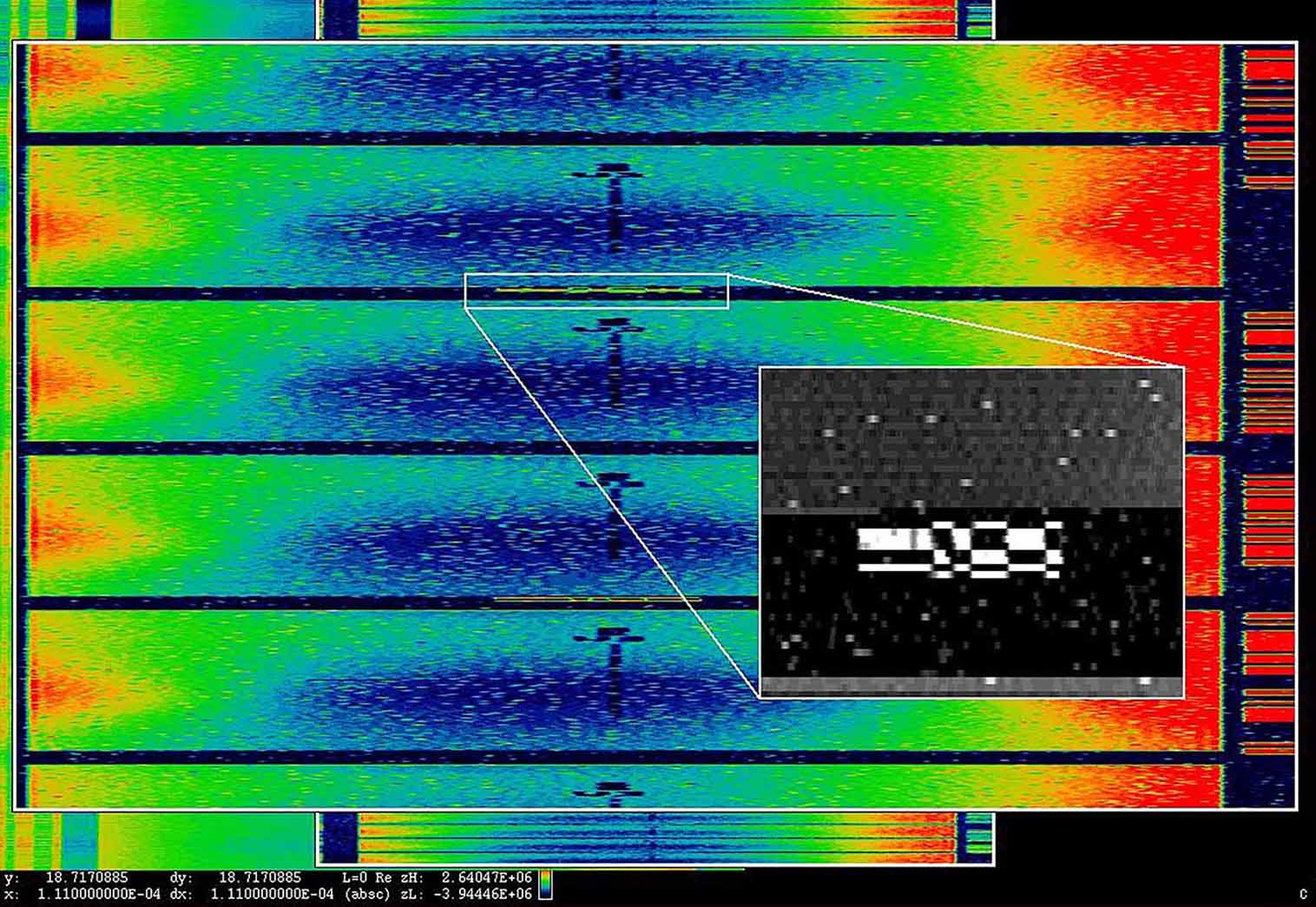Trisha Baga’s “Mollusca & The Pelvic Floor” positions the viewer at a crossroads between virtual fantasy and scientific verification. Upon entering the gallery, the viewer is ushered into a mise-en-scène of quotidian objects and oddities, all rendered in glazed ceramic: an Amazon package, a bust of RuPaul wielding a virtual assistant accessory (RuPaul: Calcified Encasing for Virtual Assistant, 2018), a shirt absentmindedly left on the floor (Elvis Has Left The Building, 2018), a pack of dogs in the shape of pyramids with fires calmly ablaze on their heads. Unbeknownst to the viewer, this confounding array is a forebear to Baga’s main attraction.
A thirty-seven-minute video, from which the exhibition takes its title, can be heard from a darkened room through a curtain of vinyl strips. Reclining on a gaming chair, behind the lens of 3-D glasses, the viewer is able to bask in splices of footage depicting scenes such as a night-time recording of the artist and her dog passing through Sicilian caves alongside sartorial mash-ups of blockbuster films such as Contact and Ferris Bueller’s Day Off. As the viewer bathes in this deluge of content, a glowing blue halo (recognizable as the awakened reaction of an Amazon Alexa) hovers in midair on the screen. At random intervals, Baga’s voice commands her Alexa, renamed Mollusca, to turn on a fan, activating various appliances that are dually integrated in the installation: an air conditioner, a radio, a clock. With each request, these objects come to life. The co-display of signifiers and the signified is a recurring trope in Baga’s oeuvre. Whereas the artist would once perform in front of her video projections, here she substitutes her body with the banal everyday objects that cameo in her films.

Baga’s exhibition is an attempt to reconcile the feeling of vertigo symptomatic of our current media overload. While she aptly conjures the fractured and overwhelming admission of infotainment, the lack of structure is at times too oblique for its own good. This sense of total confusion succeeds in suppressing the pure absorption that is typical of spectacle; yet the desire to grasp a connection between the layers of content leaves a somewhat nagging feeling.
Baga’s practice reflects the schizophrenic desires of our current age, in which we yearn for the authentic while compulsively yielding to virtual immersion. As the possibilities of a digitally augmented reality continue to proliferate, there is a counter desire to return to preindustrial methods of material reification — in which the magick of the machine is confirmed through something tangible. As our reality becomes increasingly abstracted by digital life-forms and AI, the pendulum swings towards a return to the real.






